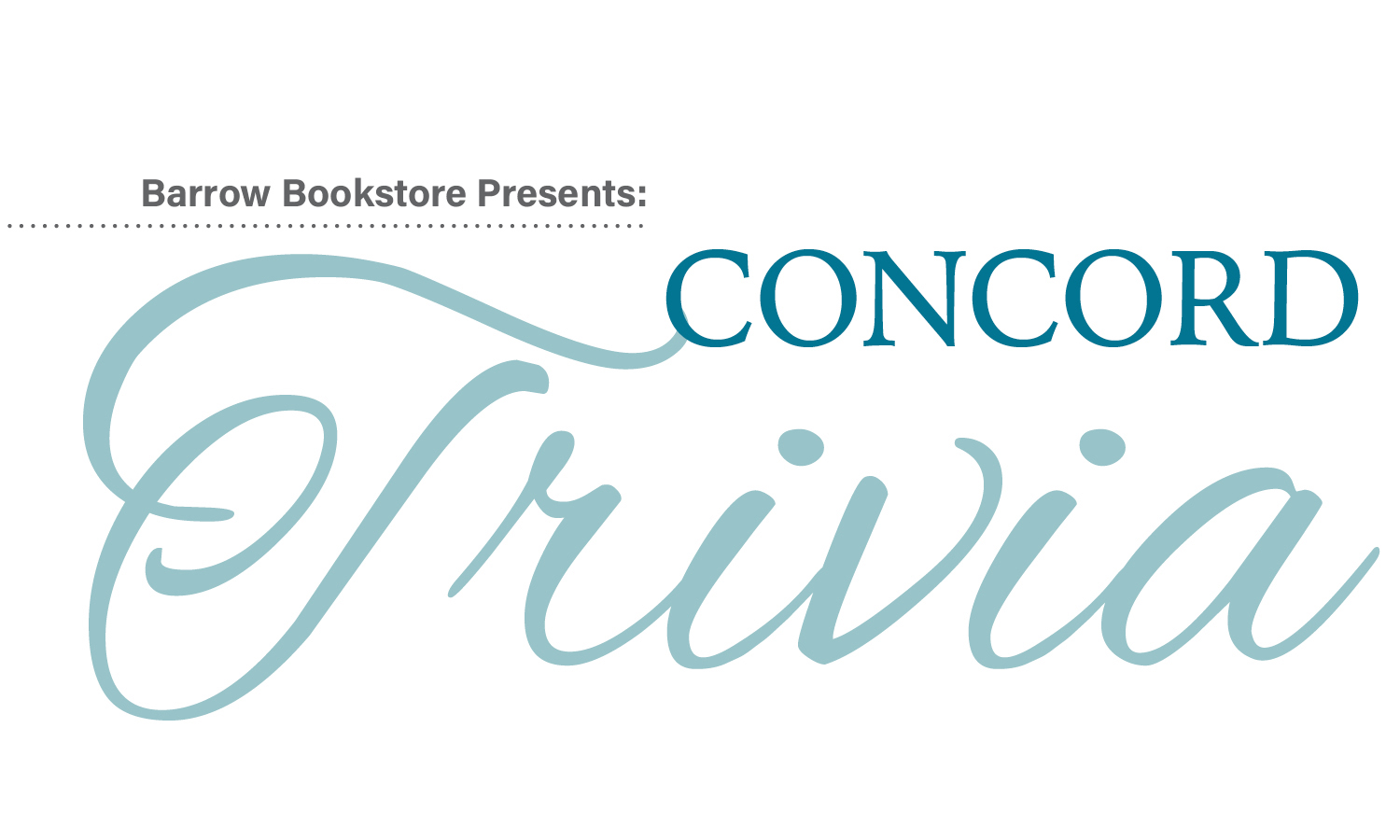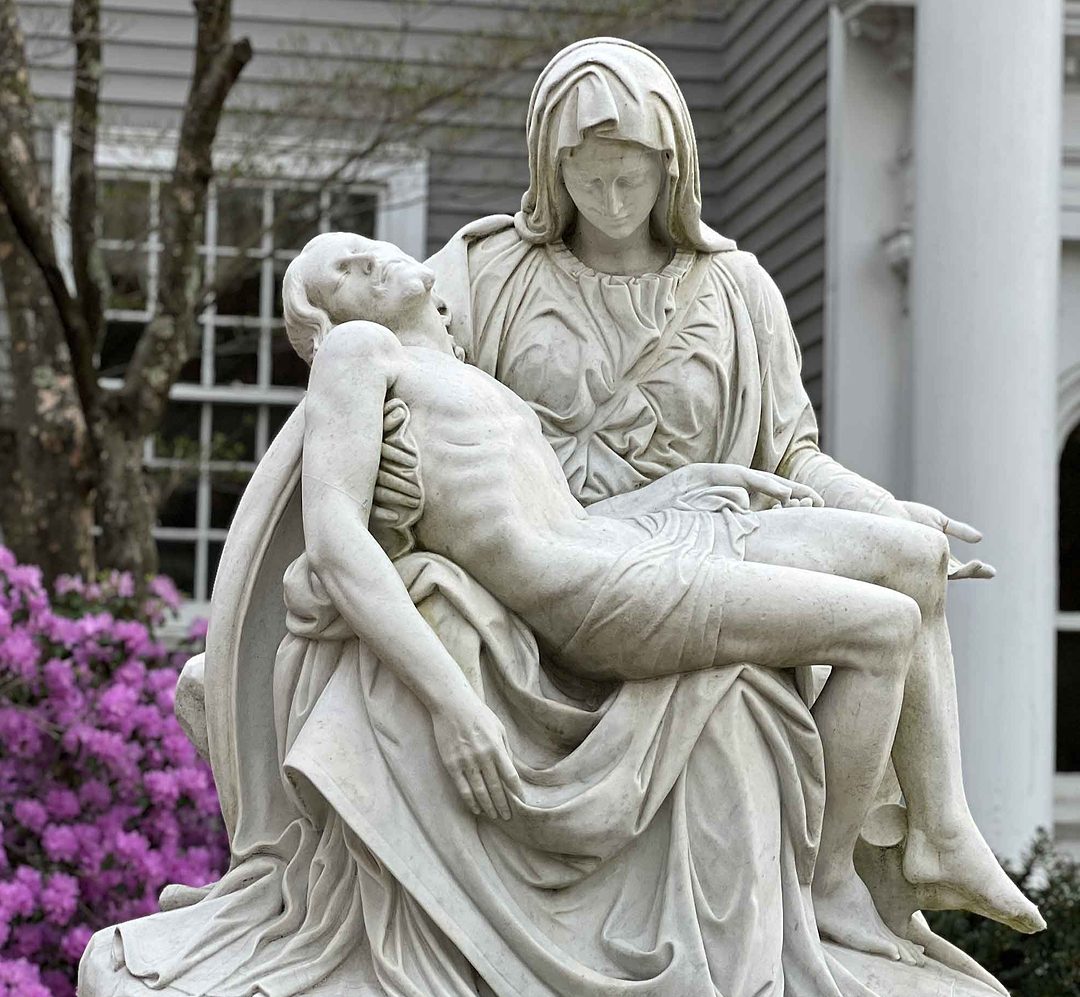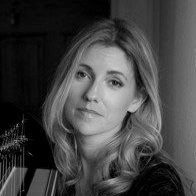
QUESTIONS
1. Which March sister is Louisa May Alcott describing in this sentence from her 1868 novel Little Women:
“If ‘genius is eternal patience’, as Michelangelo affirms, [THIS SISTER] had some claim to the divine attribute, for she persevered in spite of all obstacles, failures, and discouragements, firmly believing that in time she should do something worthy to be called ‘high art’.”
- Meg
- Beth
- Jo
- Amy
Click to show the answer
- Meg
- Beth
- Jo
- Amy
Answer: D. Amy. The youngest of the four fictional March sisters, Amy was based on Louisa’s real life youngest sister May, who was an aspiring artist. While living at Orchard House in Concord, May illustrated the first edition of her older sister’s Little Women, Part First and, eventually, became a fine artist.
2. True, False, or Sort of….
A statue made by Italian sculptor Michelangelo sits in Concord center for all to see.
Click to show the answer
Click to show the answer
Answer: Sort of. A replica of Michelangelo’s “La Pieta” statue sits in Concord Center. Recently moved from behind the Catholic rectory, the statue now sits outside Monument Hall (near the Colonial Inn and Masonic Temple). Described by Concord author Nathaniel Hawthorne in his Italian Notebooks, the statue depicts “a representation of the dead Christ, in his mother’s lap.” The original was made by Michelangelo out of a single block of marble and resides in Saint Peter’s Basilica, Vatican City, where Hawthorne visited it in 1858.
3. In 1867, at age 16, future sculptor Daniel Chester French moved with his family to Concord where he took beginning art lessons from which Concord resident:
- Henry David Thoreau
- Abigail May Alcott
- Sophia Hawthorne
- Edith Emerson
Click to show the answer
- Henry David Thoreau
- Abigail May Alcott
- Sophia Hawthorne
- Edith Emerson
Answer: B. Abigail May Alcott. Youngest sister of Louisa May Alcott, Abigail May Alcott (usually called “May”), gave art lessons to a young Daniel Chester French and taught him the basics of sculpting. French’s famed works include the Minute Man Farmer statue at the North Bridge, and the seated Lincoln in the Lincoln Memorial, Washington, D.C. Visit the Concord Library to see more of his statues.
4. Name the Mason! Built in 1820, Concord’s current Masonic Temple is home to Concord’s Corinthian Lodge A.F. & A.M. which was formed in 1797 under the authority of Grand Master ________
- Rev. William Emerson
- Simon Willard
- John Hancock
- Paul Revere
Click to show the answer
- Rev. William Emerson
- Simon Willard
- John Hancock
- Paul Revere
Answer: D. Paul Revere. Learn more about Concord’s Corinthian Lodge by visiting their website at concordmasons.org/history
5. You are a lawyer in 18th-century Concord. You are hired to administer the will of a landholder who has died. The land and property will be divided among his sons, and you see the will has made provisions for his relict. What is a “relict?”
-
His remaining livestock that will need to be moved
- His widow
- His book collection
- His outstanding debts
Click to show the answer
- His remaining livestock that will need to be moved
- His widow
- His book collection
- His outstanding debts
Answer: B. His widow. Derived from the Latin relinquere, meaning “what is left,” relict referred to the spouse of the deceased. Keep your eye on gravestones in Concord’s old burial grounds and you may see this word.
6. Accidents happen! In 1844, Henry David Thoreau accidentally did what?
- Started a fire that took off and burned over 100 acres in Concord
- Cut a fishing hole in the frozen Walden Pond that weakened the ice and caused ice harvesters to fall into the water
- Got locked in the Concord jail while trying to survey the property
- Planted chili peppers instead of beans
Click to show the answer
- Started a fire that took off and burned over 100 acres in Concord
- Cut a fishing hole in the frozen Walden Pond that weakened the ice and caused ice harvesters to fall into the water
- Got locked in the Concord jail while trying to survey the property
- Planted chili peppers instead of beans
Answer: A. Started a fire that took off and burned over 100 acres in Concord. Oops. As later described by Thoreau in an 1850 journal entry, he was cooking fish on a dry riverbank when the fire accidentally spread through arid ground. Thoreau tried to extinguish the fire and then ran for help when the flames were out of his control. Suggesting it wasn’t their problem, some townspeople were not very responsive to his pleas for help until the fire got so large that all hands—and buckets— were needed!
7. Transcendentalist Margaret Fuller was good friends with Ralph Waldo Emerson and a regular visitor to Concord. In 1847, why did Margaret travel to Italy?
A.
To work as a nanny for the Emerson family
B.
To work as a journalist
C.
To teach English at a girls’ finishing school
D. To meet a matchmaker who had arranged a marriage for her
Click to show the answer
A. To work as a nanny for the Emerson family
B. To work as a journalist
C. To teach English at a girls’ finishing school
D. To meet a matchmaker who had arranged a marriage for her
Click to show the answer
Answer: B: To work as a journalist. Margaret Fuller was hired by Horace Greeley to write for The New York Tribune. She became the first paid female American war correspondent, reporting from Rome during the 1848 Revolution in the Italian states. Although she did not use a matchmaker, during her time in Italy, Margaret did meet and marry Count Giovanni Ossoli.
8. Want to get away? You live in 1840s Concord and ride your horse to Harvard, Massachusetts, to check out “Fruitlands,” a utopian community recently started by Amos Bronson Alcott (father of Louisa May Alcott) and Charles Lane. You arrive in time for dinner. Which of the following might be on the approved dinner menu?
A.
Melons
B.
Carrots
C.
Fish
D. Cheese
E. Honey
Click to show the answer
A. Melons
B. Carrots
C. Fish
D. Cheese
E. Honey
Click to show the answer
Answer: A: Melons. Melons were acceptable fare at the utopian community, and the residents planted about an acre of them. But the community followed what was similar to a vegan diet with additional restrictions. Certain vegetables, including carrots, were forbidden because they showed a lower nature by growing downward. Near starvation contributed to the Alcotts leaving Fruitlands after only seven months. Shortly after, they moved to Concord and into today’s named Wayside House on Lexington Road.
9. Born in Concord in 1823, this abolitionist, teacher, and equal rights activist, is today locally referred to as “Concord’s Rosa Parks.” Was she:
A.
Ellen Garrison
B.
Mary Moody Emerson
C.
Louisa May Alcott
D.
Jennie Duggan
Click to show the answer
A. Ellen Garrison
B. Mary Moody Emerson
C. Louisa May Alcott
D. Jennie Duggan
Click to show the answer
Answer: A. Ellen Garrison. When the Civil Rights Act of 1866 was passed, Ellen was working as a teacher in Maryland. The Act declared “that all…. citizens of the United States…of every race and color… shall have the same right, in every State and Territory….” Despite the promised language in the Civil Rights Act, Ellen was forcibly removed from a train station in Baltimore after she sat in a segregated waiting room. Ellen challenged this action in court. Learn more by visiting the Robbins House Museum or read Camille Johnson’s Discover Concord article “From Concord to California: Ellen Garrison and her fight for Freedom” in Discover Concord magazine. issuu.com/discoverconcordma/docs/dc.fall22.fullbook/s/16740941
10. Yo, ho, ho, and a bottle of rum for the Men of Concord! Which American artist illustrated both Robert Louis Stevenson’s Treasure Island and Men of Concord (short biographies written by Henry David Thoreau)?
A. Abigail May Alcott
B.
Daniel Chester French
C.
N.C. Wyeth
D. Joe Shmoe
E. An’Ida Kno
Click to show the answer
A. Abigail May Alcott
B. Daniel Chester French
C. N.C. Wyeth
D. Joe Shmoe
E. An’Ida Kno
Click to show the answer
Answer: C. N.C. Wyeth (1882-1945) Visit the William Munroe Concord Library to view their Wyeth art collection on permanent display.
Contact Barrow Bookstore for a list of sources. Barrowbookstore@gmail.com.
———————————————————————————————————————
For more than 50 years, Barrow Bookstore has been a favorite of residents and visitors alike, specializing in Concord authors and history, children’s books and literature. The shop also provides a wide array of gently read and rare titles ranging from paperbacks to first editions and original manuscripts. Staff members have all worked as tour guides and reenactors in Concord and are happy to share their knowledge about the town and its history. Discover more at barrowbookstore.com.


